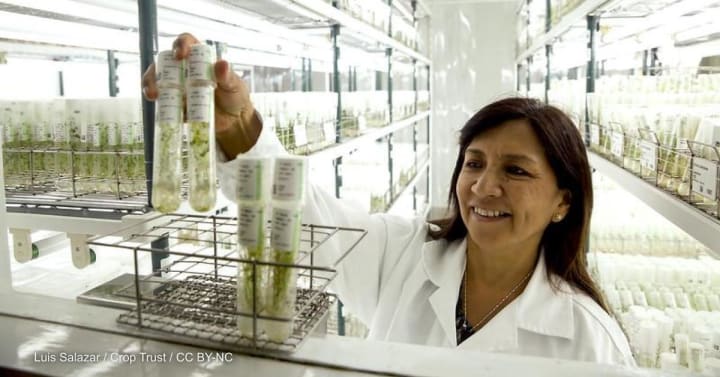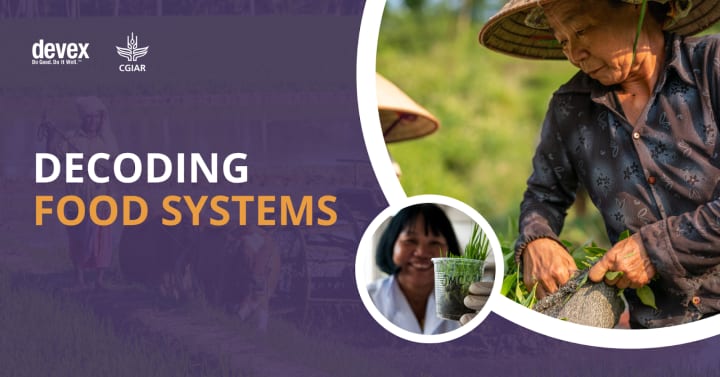
Of the many science-driven solutions developed to address global food insecurity, crop breeding is among the most promising — with major gains over the past several decades. Scientists have learned how to improve the nutritional makeup, yield, and climate adaptability of food crops.
While improved crop varieties have already been adopted at scale, the ongoing challenge is to continue developing and delivering crops that meet today’s complex needs, from shifting farmer and market demands to rising climate pressures and growing nutrition gaps.
CGIAR’s crop breeding spans a wide range of regions and farming systems, offering solutions that are adaptable to different agroecological contexts. These efforts are not just about boosting yields — they also aim to deliver more nutritious, resilient, and climate-smart crops that address the complex challenges facing food systems today.
“As a scientist myself, we sometimes forget how important it is for us to distill the work that we do into action,” said CGIAR Chief Scientist Sandra Milach, Ph.D. “At the end of the day, we are here not for the science; we are here to find solutions for problems in food systems.”
Biofortification (improving the nutritional value of crops) is one crop-breeding technique that has shown sustainable results in addressing zinc deficiency in Pakistan, which affects more than 50 million people.
Over a 20-year partnership between CGIAR and Pakistani scientists, five zinc-enriched wheat varieties have been released, and 50% of the total area now planted with wheat in Pakistan is biofortified varieties. A key part of its success has come from developing a strong local agenda, which includes working closely with farmers and consumers on the ground.
Being able to test biofortified varieties at the local level is critical to bringing them to scale — “not test plots done in research centers, but test plots that are produced by farmers themselves,” Dr. David Nabarro, strategic director of 4SD Foundation and co-director of Imperial College London's Institute of Global Health Innovation, said. “Team up with local farmers and their organizations to get them to test it out and listen carefully to what they say,” he advised.
Another way to ensure that farmers are equipped with the crop varieties they need is through scalable public-private breeding programs.
The Collaborative Breeding of Five Tropically Adapted Potato Varieties, or TAP-5, program produced a potato variety adaptable to tropical climates while also meeting market and consumer demands. It was the product of merging breeding material developed by CGIAR that is resilient to climate and disease with a high-yield variety created by HZPC, a Dutch private-sector potato breeding company.
“All the work we do in CGIAR, we rely on partnerships, which means it could be local seed companies, it could be national partners,” Milach said. “So we really rely on them to be able to bring this to fruition and to the people who need it the most.”
Currently operational in Vietnam, Peru, and The Netherlands, TAP-5 is now rapidly expanding and is expected to encompass 70% of tropical potato-growing regions within the next few years.
Public-private partnerships can also be leveraged to deliver climate-resilient agricultural technologies that bolster farmer livelihoods and regional economic growth, but it’s imperative to “make certain that as well as doing the research to develop new varieties and the like, there are the resources needed to help those who are going to use them,” said Nabarro. “That's particularly farmers and especially smallholder farmers.”
Part of the problem addressed by the African Development Bank’s Technologies for African Agricultural Transformation, or TAAT, program is the ability to produce enough seeds and ensure last-mile delivery to farmers, especially those based in remote areas.
TAAT — a collaborative effort between CGIAR, national and regional research centers, seed and fertilizer companies, and agribusinesses — has bridged this gap by streamlining regional seed and farm input regulations. Its ultimate goal is to bring an end to hunger and malnutrition across Africa by accelerating agricultural productivity.










